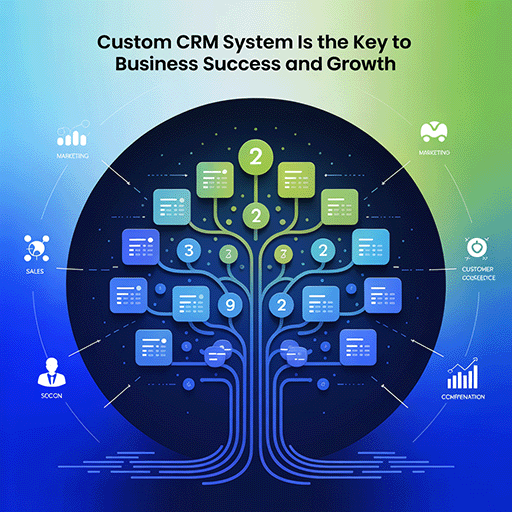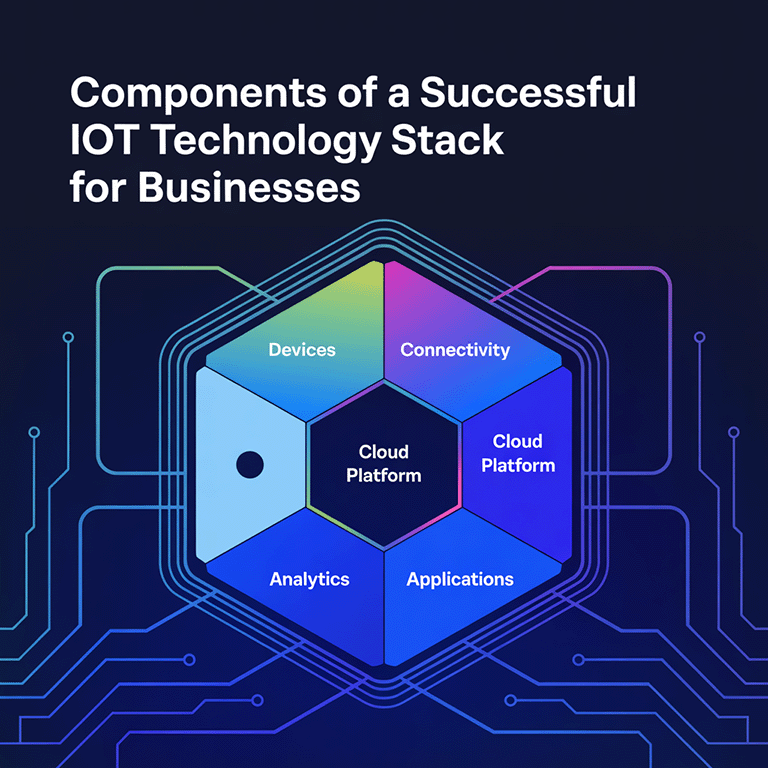Open-source software (OSS) is an idea that has changed how programmers look at code and publish it. Unlike custom software that is made only by some people and given out at a fee, OSS is created with a lot of help from different people and may be taken by anyone who wants to use it and develop it further. This open approach stimulates creativity in technological processes, making them more secure and sometimes cheaper than closed commercial ones.
In most cases, OSS solutions are based on the copyleft idea. This means that when you modify or add features to such software, the changes are automatically included under the same license it had before. Such terms promote continued growth and ensure that everyone benefits from improvements made by others. Let’s closely examine the positive and negative aspects of employing open-source solutions.

What is Open-Source Software?
The concept of open-source software refers to a situation where the code or project is accessible for anybody to modify and share. Software development has now evolved into covering wider concepts that are “the open source way.”
Open-source software is created through open exchange, where people work together, and everyone can see what is going on. This speeds things up and allows work to be done according to people’s skill levels.

Open-source software can be accessed by anyone wanting to look at it, change it, or improve it. Programs or applications are created by the source code, which is hidden from the normal user’s view. Developers use this code to add capabilities or fix errors, thereby continuously improving their products.
Such software development has made it possible for many individuals to take part in creating various innovative products, allowing them to easily meet customer requirements. Read our blog to learn more effective techniques to level up the software development process.
The History of OSS
Richard Stallman (a programmer at MIT) initiated the concept of open source in 1983. He believed that programmers needed an open way of sharing software so that they could modify, understand, or enhance it. He intended to encourage collaboration and openness among program developers.
The basis for defining this model was the GNU General Public License introduced by Stallman, which allows people to freely share and modify it, with future generations of users retaining the same rights on it.
This was when the foundation for a bigger open-source philosophy was laid. The Open Source Initiative (OSI) was started in 1998 to formalize and promote these ideas, marking an important point in the evolution of software development.
Use of Open Source Solutions in Business
In recent years, giant corporations like Microsoft, IBM, Google, and Apple have seen how important open-source software (OSS) can be for their products and services. They are not just using the creativity and freedom that come with OSS but also investing heavily in enhancing its safety features and making it bigger. Leading companies’ choice of open-source software is evidence that it spurs technology transformation and serves broader corporate requirements.

Multiple open-source solutions have become favorites due to their dependability and versatility.
These include the following:
-
Kubernetes
-
Docker
-
NGINX
-
MySQL
-
WordPress
-
Git
-
WooCommerce
-
Bugzilla
-
OpenProject
-
Node.JS
-
Eclipse
-
Bootstrap
Major Advantages of Open Source Software
1. Easy on the Wallet
OSS’s lack of expense sounds like a refreshing advantage. Eliminating licenses associated with commercial software systems saves a significant amount of project money, which is favorable to new companies and small firms with limited budgets. In addition, free community support cuts down on operating expenses, making OSS an economical choice for many enterprises.
2. Gives Room For Flexibility And Customization
OSS is credited for providing exceptionally high levels of flexibility and customization due to the openness it offers and the existence of its source codes. This is crucial since developers can tweak it accordingly if they wish to have specific functions that address those particular needs within their organizations. This leads to performance optimization and operational efficiency enhancement, just like in the case of any other applications such as office suites or Internet browsers.
Moreover, some capabilities, such as differentiation ability among innovative products, create sustainability amid stiff competition, hence growth continuity and customer retention, but before transitioning from one type into another.
3. Community Collaboration
A very active community around OSS will always consist of different types of developers and fan professionals working together on common tasks. This co-product development shortens cycle times and enhances peer review procedures while promoting “knowledge dissemination.” Participation in open-source programs grows tech-knowledgeable opportunities among software engineers globally.
4. Clarity and Safety
An open-source code underpins security standards and is considered for improvements or imperfections, quickly bypassing the need to issue licenses! It keeps developers on their toes to detect and fix any other type of attack, such as worms, Trojans, and viruses, among others, as soon as possible, meaning a tough protection level against cyber criminals. In addition, OSS encourages the establishment of community-controlled security systems, eliminating the possibility of being attacked and preventing threats.
Major Disadvantages of Open Source Software
1. Non-existent customer aid
Even though there are many participants within open–source groups, it can still be challenging for companies since often only informal forums and FAQs exist as support platforms, unlike proprietary applications, which have companies that provide comprehensive user assistance.
Consequently, managing such instances without timely professional development requires effective measures from those who own or use such applications in between emergencies, let alone complex routine maintenance.
2. Expenses that are not expected
In addition to avoiding initial fees, further spending may result from implementing, tailoring, and supporting such programs. With time, other hidden costs, such as training or infrastructure updating, grow to surpass initial predictions. For this reason, thorough financial forecasting techniques are needed to discourage any uncertainties related to the adoption of open-source solutions by various businesses.
3. Unifying Open Source Technologies While Keeping Track of Diverse Projects
Numerous projects, frameworks, and libraries in the open-source environment promote diversity but hamper compatibility. By the way, our blog features the best front-end frameworks of 2024. Therefore, before incorporating diverse OS components, considerable effort must be put into the planning process. One must engage in extensive development processes and consider every issue that may arise, fearing recurrent project changes or system breakage.
Find a detailed comparison of the best web frameworks. Go to a blog
4. Issues Relating To Intellectual Property Rights And Licenses
Companies must deal with serious intellectual property rights issues when using OSS in a proprietary software environment. If such obligations are not met, legal liabilities, including copyright litigation and business interruptions that demand specialized legal advice, would be required, as would strict compliance using software licenses for OSS.
Benefits of Open Source Software
Detailed Data Insights
Google Cloud has a selective collection of open-source software (OSS) known as Assured OSS, which is scanned with great care to identify dangerous vulnerabilities. This service is very important because the cost of independent scanning for threats may be too high for many organizations. As a result, organizations will realize significant losses from their scanning budgets if they choose independent vulnerability scanning because prices are exorbitant.
Comprehensive Vulnerability Scanning
Assured OSS provides enriched metadata and analysis via assured and signed SBOMs and VEX data in industry-standard formats. This transparency empowers customers to scrutinize the end-to-end build process of each curated OSS artifact, including its transitive dependencies. With such detailed insights into open-source software, organizations can modify or customize it to meet their individual business needs.
Developer-Centric Approach
Google Cloud uses Cloud Build to create its OSS packages under the Assured OSS portfolio. Every package contains proof that it complies with enforceable Supply Chain Levels for Software Artifacts (SLSA), thus maintaining conformity with the current standards.
This devotion will safeguard the software supply chain from any harm that illegal entries might cause, as the open-source software packages will come from an identified and reliable source, thereby promoting increased developer output.
Efficient Distribution Mechanism
Google meticulously signs all the open-source software packages in its Assured OSS range and provides them through the organized Artifact Registry and Storage services built into the Cloud. Access to Assured OSS for both organizations and individuals is as simple as subscribing through their secured endpoint, API surface, and other notifications PubSub. In addition, the accompanying metadata ensures tamper-evident provenance to establish a clear chain of custody for how each package is constructed, scanned, and safeguarded.

How Open Source Software Works
In the open-source model, a public repository makes available source code. This allows various people to access, use, or contribute to the code, thereby promoting community collaborations. Besides, any OS software has a distribution license that explains the program’s usage, study, modification, and redistribution.
The following are some of the key licenses:
MIT License: This allows for almost unlimited use, modification, and redistribution.
GNU General Public License (GPL) 2.: Requires that any derivatives be released under the GNU license.
Apache License 2.: Same as GPL 2. but without additional compatibility restrictions.
GNU General Public License (GPL) 3.: Updates GPL 2. with more requirements for compatibility.
BSD License 2.: Allows maximum freedom with minimal limitations in some specific regions.
When modifying OSS, developers need to document these changes and ways employed. Depending on what the initial license says, one may need not distribute it.

Is Open Source Software Bug-Free?
Open-source software is not entirely free from bugs. Many contributors could introduce quality, performance, and security issues. Nevertheless, numerous contributors usually make spotting and removing errors faster. Unlike proprietary software, which requires vendors’ assistance in repairing problems faced during operation, open source depends on its society or individual users for bug fixes. Implementing strong app security tools and practices can enhance the security of OSS.
Open Source vs. Closed Source: What’s the Difference?
Price
Open Source: Not high or no price
Closed Source: Changes by size and licensing
Freedom in Customization
Open Source: High in features with customization; it depends on the license
Closed Source: The only way to customize is by asking the vendor
User-Friendliness
Open Source: Might not be more user-friendly, depending on what project you want
Closed Source: Develop a user-friendly approach, mainly focusing on UX.
After-Sales Support
Open Source: It depends; popular OSS may have strong community backing
Closed Source: Support from teams who are responsible; the aspects of service change
Security
Open Source: The process of reviewing codes will make it safer while having a risk of abusable points
Closed Source: The developer guarantees its safety, while hidden traps could be placed in the course of its creation
Vendor Lock-In
Open Source: No vendor lock-in, but there can be technical dependencies
Closed Source: There might be a lock-in as a result of investment and proprietary technology
Stability
Open Source: Depends on who is using them and how often they maintain their functionality; hence, different levels exist among different types
Closed Source: Some are more stable due to much handling in the past, yet others have continuous problems because they are relatively new
Popularity
Open Source: Some people use these products more than others (e.g., Linux)
Closed Source: Dominates some markets with its software
Total Cost of Ownership (TCO)
Open Source: The start-up price is lower; maintenance defines
Closed Source: More expensive in initial capital outlay but cheaper over time due to more users adopting it
Community Participation
Open Source: Open community involvement in the production of development
Closed Source: Self-contained community; a manufacturer directs
Interoperability with Other OSS
Open Source: It is likely to be better due to healthier maintenance
Closed Source: It is dependent on developing standards
Tax Calculation
Open Source: Tax calculation becomes hard because there is no definite value for money
Closed Source: Clear about how much tax should be paid based on what has been calculated
Enhancements or New Features
Open Source: Users can work on them
Closed Source: You should contact the software owner for that
Suitability for Production Environment
Open Source: Variable; may not be optimized for large-scale deployment
Closed Source: Typically tested extensively; issues can arise
Financial Institution Considerations
Open Source: Usually shunned by financial institutions; requires vetting if adopted
Closed Source: Based on previous operations, most firms tend to be keen on it
Warranty
Open Source: There’s a warranty for you
Closed Source: Often has warranty and indemnity on liability, which covers the users all the time
Difference Between Open Source Software and Proprietary Software
Open Source Software
Open source software is computer software whose source code is freely available on the Internet. Programmers can modify it to add new features and capabilities without any cost. This software is developed and tested through open collaboration and managed by an open-source community of developers. It provides both community and commercial support for maintenance and is often available free of charge. This software sometimes comes with a license that provides certain rights to users.
Characteristics:
-
Availability: Source code is openly accessible.
-
Cost: Generally free of charge.
-
Development: Managed by a community of developers.
-
Support: Both community and commercial support are available.
-
License: May or may not come with a license; licenses typically provide user rights.
-
Freedom: Users can utilize the software for any purpose, research its functioning, edit it to improve it, and distribute it without any limitations.
Examples:
-
Android
-
Ubuntu
-
Firefox
-
OpenOffice
Proprietary Software
Proprietary software is software developed by a company that keeps its source code secret; nobody else can see it. The person or organization that owns this software is responsible for its development and testing, not any member of the public. This software is managed by a closed team of individuals or groups and requires payment to access and use. Commercial support is available for maintenance. Users receive a valid and authenticated license to use the software, but this license imposes certain restrictions.
Characteristics:
-
Availability: The source code is not accessible to the public.
-
Cost: Requires payment to access.
-
Development: Managed by the owning organization or individual.
-
Support: Commercial support is provided.
-
License: Comes with a license that restricts usage.
-
Restrictions: Limits on the number of installations, sharing, operational period, and features allowed.
Examples:
-
Windows
-
macOS
-
Internet Explorer
-
Google Earth
-
Microsoft Office
Takeaways
Open source software is an innovative way of developing programs that encourages teamwork, adaptability, and the creation of new ideas. It encourages developers all over the world by sharing source code, enabling them to make contributions, modifications, or even enhancements to any software. Hence, it creates a lively community that is connected to technological advancement.
Major corporations like IBM, Google, and Microsoft have realized its importance in their operations and have invested in it. The open source model provides opportunities for cost-cutting through customization but poses problems such as managing numerous programs simultaneously and legal matters involving patents and copyrights on software. In essence, OSS shapes the future of programs while providing an evolving platform for technology growth.
We know full well what challenges companies face with open-source solutions, but we also know how to tackle them easily with innovations. Our developers contribute greatly to open-source projects.
Want to build your own open-source software? LITSLINK is the right place for you! Our team of expert software engineers can handle any project, no matter how complicated, big, or tricky.





